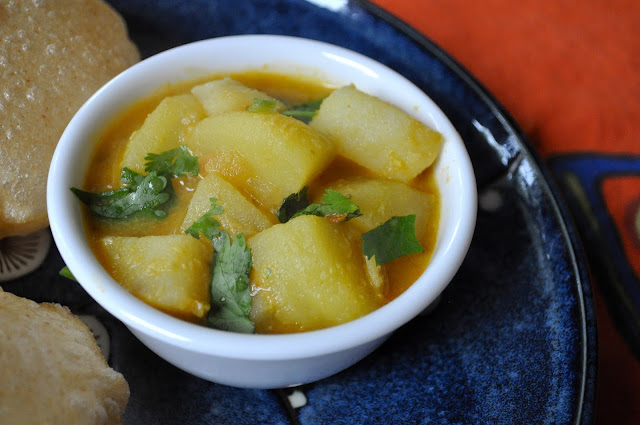I love navrathri. It is one of my favorite festivals. My mom did not keep golu (a
display of dolls), but several people in our neighborhood did. We used to walk from house to house,
admiring their beautiful displays, singing bhajans (if you can imagine me
singing!), and collecting packets of sundal (lentil/bean salads).
Golu is handed down from the husband’s side of the
family. So when I got married, my
mother-in-law helped me set me up my own golu. My kids were much younger when I first started. And being in the U.S., I did not have
access to the huge variety of dolls available in Chennai. We made do with a lot of Legos and Harry
Potter figures. No one seemed to
mind and it was a lot of fun.
 |
| Blacy-eyed peas vadas |
In the south, navrathri is mainly a women’s festival. But with two boys in the house, I decided early on to include whole families in the celebration. If navrathri spans two weekends, I have multiple parties, but if it includes only one weekend, then I have one massive party.
This year, navrathri starts on a Saturday and ends the following
Sunday. We also have the Monday after Saraswati Pooja off (teacher in service). So I have decided to have multiple parties. I have been looking for recipes that I can make for my
various get-togethers. This is one
time of the year, that I don’t do potlucks.
I saw this recipe for an African appetizer using black-eyed
peas, called Accara. It looked
interesting. Since I had found a big packet of these while cleaning my pantry, I decided to try it out. I made some modifications to the
original recipe, to make it more Indian.
The original recipe asks that you peel away all the skin
from the black-eyed peas, but I did not. After soaking for a while, I squished the black-eyed
peas till some of them popped out of their skin. So by the time I was done, maybe half of them had popped
out.
Here is what you need:
(To make about 20 - 25 fritters/vadas)
- 1 cup black-eyed peas, soaked for at least 8 hours
- ½ cup chopped onions
- 3 – 4 green chilies, chopped
- 1 – 2” piece ginger, minced
- ½ cup chopped cilantro
- ¼ cup besan (chickpea flour)
- salt to taste
- 1 tsp. hing (asafetida)
- oil for deep frying
Here is how I made it:
- Heat oil in a kadai/saucepan on medium heat.
- Wash the black-eyed peas, and try to get the skin off about half of them, by squeezing them till they pop.
- Drain the peas and put them in a food processor.
- Pulse them into a coarse paste without adding water.
- Add the chopped onions, green chilies, ginger, cilantro, salt, and hing. Mix well.
- If you are not able to shape these into balls (or if they disintegrate in the oil), add the besan and mix.
- Shape into balls and deep fry in hot oil on medium heat. Let this cook slowly so that the outside is nice and crispy and it is cooked well on the inside.
- Repeat till all the batter is done.
Serve hot with chutney/spicy chili sauce
I am thinking of making these ahead of time for the party
and warming them up in the oven just before people arrive.







































